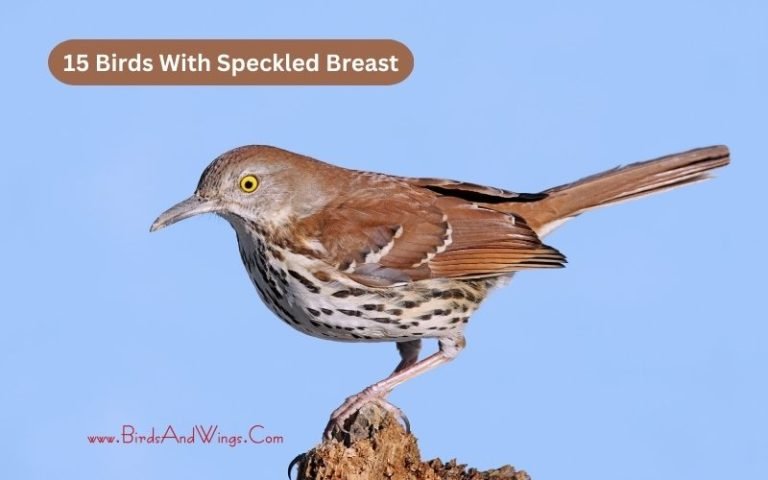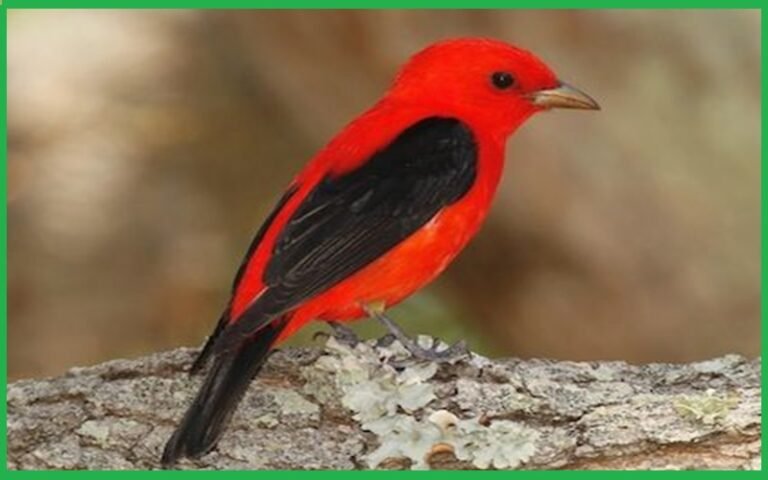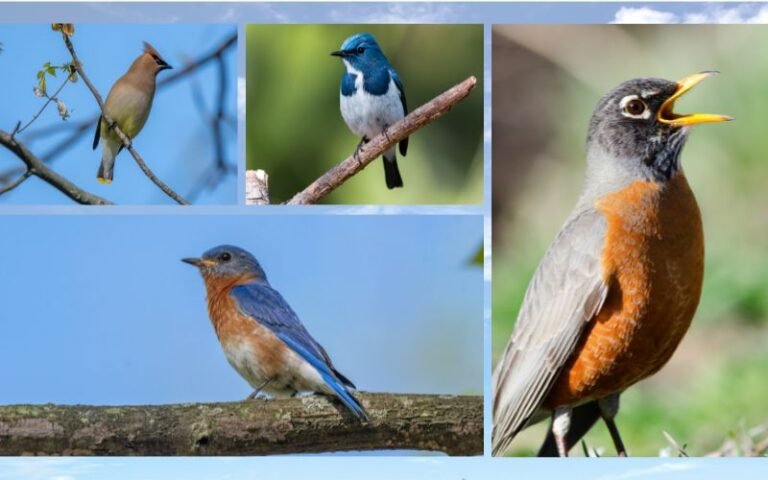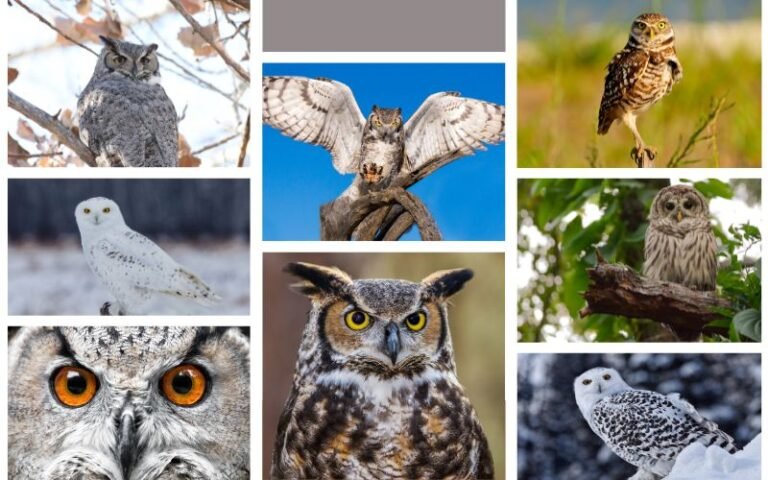15 Beautiful Birds of Kauai
Kauai is an island which is located in the Central Pacific, part of the Hawaiian archipelago. This Kauai is also called “Garden Island.”
Kauai island is famous for the tropical rainforest which covers much of its surface and has an abundance of beautiful birds.
In this article, we are going to explore the top 15 beautiful birds of Kauai, the garden islands, along with these birds’ Scientific names, lifespans, wingspans, sizes, diets, and other attributes and facts about these Kauai birds.
So let’s explore the beauty of Kauai birds.
15 Beautiful Birds of Kauai
Kauai Island is recognized for its immense diversity of bird species. It is covered with tropical rainforest areas that are suitable for some avian species.
This section will talk about the top 15 beautiful birds of Kauai which are also one of the rare species around the world.
This article will also discuss the scientific names, lifespans, wingspans, sizes, diets, and other facts of these rare, beautiful species.
Bird 1: Akikiki

- Scientific name: Oreomystis bairdi
- Lifespan: around 5.7 years
- Wingspan: not found
- Size: 13 cm
- Food or Diet: insects, larvae, spiders, etc.
The Akikiki birds, also known as Kaua’i creepers, are the most endangered bird species, with only 454 wild individuals in the Kauai Islands.
These beautiful Akikiki birds of Kauai land have gray and white plumage over their bodies, with white eye rings around the eye area. They also have pink legs and pink bills.
This species of Akikiki bird is mostly found in the rainforests of Koke’e State Park in the Kauai land. Their nesting season usually starts from March to June.
It has been found that only female Akikiki birds incubate the eggs; however, both male and female birds feed their young until they fledge. These species are losing in numbers due to deforestation.
Bird 2: Akeke’e

- Scientific name: Loxops caeruleirostris
- Lifespan: not found
- Wingspan: not found
- Size: not found
- Food or Diet: spiders, insects, caterpillars, nectars, etc.
Akekee birds are also familiar as Kaua’i akepa birds related to the Fringillidae family. These birds are highly endemic or familiar in the Kauai land or garden land.
These beautiful Kauai birds are greenish-yellow birds with black masks around their eyes and bluish beaks. Their bills are slightly crossed, which is why they are distantly related to crossbill birds.
This species prefers wet forests, especially Metrosideros polymorpha trees, for its habitats in Kauai. It also uses its beaks like scissors to cut the buds in order to search for insects inside.
They also consume the nectar of some trees. These birds use tree cavities to build their nests. In 2008, these Kauai birds were identified as highly endangered species due to a rapid population decrease of 21% every year.
Bird 3: Puaiohi

- Scientific name: Myadestes palmeri
- Lifespan: up to 11 years
- Wingspan: not found
- Size: 18 cm
- Food or Die: fruits, berries, insects, invertebrates, etc.
The Puaiohi birds are also referred to as small Kauai thrush birds which is related to the rare species of songbirds in the thrush family. These beautiful kauai birds originated in the garden island or kauai island.
They have dull olive-gray plumage on the upper side of the body, and the belly or lower part of the body is grayish-white. Both male and female Puaiohi birds have almost similar looks.
Like other Kauai birds, these Puaiohi birds are considered rare on the island. They are restricted to the Alakai wilderness of the Hawaiian island.
Their 75% breeding occurs in only 10 sq kilometers ranger inside the forest. During their breeding season male birds sing to attract their mates. Usually their breeding season starts from April to May.
They made their nests in tree cavities, and female birds laid two garish to bluish eggs in them. Male Kauai birds provided food to the young when they hatched 13 to 15 days later.
Bird 4: Nene

- Scientific name: Branta sandvicensis
- Lifespan: 8 to 10 years
- Wingspan: 43 to 45 inches
- Size: 41 cm
- Food or Diet: seeds, fruits, leaves, flowers of grasses and shrubs
Nene birds are the large birds also known as the Hawaiian goose which is local to Kauai Island. These Goose birds were officially announced as the state birds of Hawaii.
These birds are the large birds of the Kauai island or the garden island and spend most of their time on the ground. Although they utilize their most time on the ground they have the ability to fly.
These beautiful Kauai birds have black bills, legs, and feet with a grayish brown body. They have soft features under their chin area. These Kauai birds prefer shrublands, grasslands, and lava plains for their habitats.
They also migrate to lowland breeding areas to foraging forest areas. Their breeding season starts from August to April. Female geese choose their nesting sites and make the nest there.
Later they lay 1 to 5 eggs and incubate for 29 to 32 days. It has one of the rarest populations, with 3862 birds at the current time.
Bird 5: Anianiau

- Scientific name: Magumma Parva
- Lifespan: 9.5 years
- Wingspan: 6 -7 inches
- Size: 10 cm
- Food or Diet: nectar from the flowers, arthropods, trees, shrubs, and vines
Anianiau birds is a similar species of Hawaiian honeycreeper which is endemic to the island of kauai. These beautiful kauai birds have yellow plumage over their body with brown wings, yellow beaks and black eyes.
Female Anianiau birds have duller yellow on their body. These garden island birds prefer wet forests and rainforests for their habitats. These species can fly above 2000 ft above from the wet forest areas.
Their breeding season starts in February and ends in June. Females make cup-shaped nests with twigs and lichens on an Ohi tree.
There, the female Kauai birds lay 3 eggs, and three weeks later, the little yellow chick leaves the nest. This bird was first observed in 1830, later another 50 years it was not seen at all until the year 1960.
These kauai birds are also rare species and face threat because of habitat loss and not having native plants to live in.
Bird 6: Apapane

- Scientific name: Himatione sanguinea
- Lifespan: around 6.4 years
- Wingspan: not found
- Size: 13 cm
- Food or Diet: insects and spiders
Apapane birds are a small species of Hawaiian honeycreeper which is local to Hawaiian Islands of kauai, Maui, molokai Islands.
Adult Apapane kauai birds have bright crimson with white features on the undertail and on lower parts of their body. These kauai birds are active singers and they can sing even in the flight position.
They have variation in their vocals and during their songs with repeated phrases. Their singing pattern includes whistles, rasps, melodic trills and clicking sounds.
These beautiful Kauai birds’ breeding season usually starts from October and November and lasts until February to June. After the breeding season female Apapane birds build the nest and lay 1 to 4 eggs there and incubate for 13 days.
During the incubation process, the male birds do not visit the nests. However male birds will bring food if the female birds are not around the nests. Sometimes, female birds sing to call the male birds and beg for food.
Bird 7: I’iwi

- Scientific name: Drepanis coccinea
- Lifespan: 5 to 12 years
- Wingspan: not found
- Size: around 6 inches
- Food or Diet: nectar from flowers, insects, small arthropods, etc.
I’iwi birds are also known as Scarlet honeycreepers related to Hawaiian honeyeater species. These birds are highly spotted in the Hawaii island of Kauai, the garden islands.
These birds have bright red bodies with a black wings and eyes. They have long beaks which are curved downward.
These birds are also known as song birds in the kauai lands and their songs include a couple of whistling sounds, ball dropping sounds in the water and balloons rubbing sounds.
Their breeding season starts in winter in January to June. They choose their breeding spot full of ōhi plants. Later female birds lay 2 to 3 eggs in their cup shaped nests which are made of fibers, petals, and down features.
This species is also listed as an endangered species by the IUCN after losing its 90% population.
Bird 8: Alae Ula

- Scientific name: Gallinula galeata sandvicensis
- Lifespan: around 10 years
- Wingspan: not found
- Size: 33 cm
- Food or Diet: vegetation, plants, grass, seeds, algae, invertebrates etc.
Alae Ula birds are also referred to as Hawaiian gallinule or Hawaiian moorhen birds which are related to common gallinule birds. Alae Ula birds are mostly native to Kauai island of Hawaii.
These birds have dark gray-brown underparts with black heads and necks. They also have white undertail with red from tal shield covering its forehead and bills. Immature gallinule birds are more olive-gray.
These birds prefer mainly lowlands, wetlands, and freshwater in the Kauai islands for their habitats. These Kauai birds also prefer dense vegetation and open water places.
These birds’ breeding season remains throughout the years mostly in March to August. During their nesting time they become highly territorial birds and will not allow any intruders to come near their nests.
They make their nests within dense vegetation above shallow water or fresh water which is not more than 60 cm deep. Although they do not have a large population, they are listed as a stable species in the Kauai Islands.
Bird 9: Kauai Elepaio

- Scientific name: Chasiempis sclateri
- Lifespan: around 13 to 15 years
- Wingspan: around 7 inches
- Size: 14 cm
- Food or Diet: arthropods, beetles, ants, caterpillars and spiders
The Kauai Elepaio birds are one of the subspecies of monarch flycatcher birds, which are endemic to Kauai Island. These Kauai birds have brown heads and dark brown wings on the back with a whitish belly.
In 1970, these birds were calculated to be 40,000 which lately decreased by half in the upcoming 1990s. However, their decreased population has increased by 13% in recent years.
These kauai birds are also known as song birds which found the first birds singing in the morning and last birds to stop their singing at nights. They make different types of sounds including whistling sounds, alarming calls.
Bird 10: Kāma’o

- Scientific name: Myadestes myadestinus
- Lifespan: not found
- Wingspan:
- Size: 8 inches (20 cm)
- Food or Diet: fruits, berries, insects
The Kāma’o birds are small brown and white color birds that are endemic to Kauai’s island in Hawaii. Their upper body parts are light brown and lower parts are white.
These birds also make gurgling whistling sounds, bussy trills, flute melodies while they sing. These birds never flew over 3500 feet above the kauai island.
In the late 1800s century, these birds were the most common birds on Kauai Island or the Garden Islands. However, deforestation, land clearing, and parasitic diseases like avian malaria cause harm to this species.
However, this bird was last documented in 1989; after that year, it was not visible. Even in the 2000 bird survey, this bird was not documented.
Bird 11: Kauai Amakihi

- Scientific name: Chlorodrepanis stejnegeri
- Lifespan: around 9 years
- Wingspan: not found
- Size: 11 cm
- Food or Diet: fruits, leaves, insects, spiders, etc.
Kauai Amakihi birds are another species of Hawaiian honeycreeper, which is highly endemic to Kauai Island. The name Amakihi is connected to kihikihi or kihi which means curved.
This curve is basically related to the Kauai birds’ curved bills, which is why their name is Amakihi. These Kauai species have greenish-yellow bodies with down-curved beaks.
Female birds’ beaks are generally smaller and have a more dull color. These Kauai Amakihi birds’ highest estimated flying range is above 600 meters in the Kauai islands.
Previously, they were spotted flying at lower places or elevations. However, due to deforestation and habitat loss, these Kauai birds now fly above 600 meters in elevation in the mountain areas.
Their favorite trees are the Ohi tree and Koa trees, which they prefer for their nesting sites.
Bird 12: ‘Ua’u

- Scientific name: Pterodroma sandwichensis
- Lifespan: 30 years
- Wingspan: 36 inches
- Size: 16 inches
- Food or Diet: squid, fish, crustaceans and plankton
Ua’u birds are also known as Hawaiian petrels and are native to Hawaii island, including Kauai. These birds are large birds with dark gray-brown plumage over their body.
These bird breeding seasons start from March to October. These birds make their nests in burrows or rocks. After their breeding seasons, the female birds lay one white egg.
When the eggs hatch, both male and female birds go out to the sea during the daytime and return at night. This species is also identified as an endangered species due to its habitual development.
Sometimes, these chicks are also eaten by rats, cats, and small mongooses, which greatly impacts their population to increase.
Bird 13: Red-Footed Booby

- Scientific name: Sula Sula
- Lifespan: 23 years
- Wingspan: 152 cm
- Size: 70 cm
- Food or Diet: fish and squids
Red-footed Booby birds are large sea birds related to the Sulidae family. These birds have large red feet with white plumage over their body and black features on the edge of their wings.
Sometimes they have brown plumage over their body as well. These species breed on the island, especially on the Kauai island. During their breeding seasons they make colonies and stay with them on the islands.
These birds build their nests in trees or bushes. Their nests are hardly seen on the ground. These species also remain with their partner for several seasons.
These birds make their nests in large colonies and lay one blue egg in the nests. This egg is incubated for 44 to 46 days by both male and female birds.
Bird 14: White-Tailed Tropicbird

- Scientific name: Phaethon lepturus
- Lifespan: up to 16 years
- Wingspan: 89 to 96 cm
- Size: 71 to 80 cm
- Food or Diet: fish, snails, crabs, small squids
White-tailed tropic birds are also large sea birds that are familiar in the tropical Atlantic, western Pacific, Indian Ocean, and Caribbean Islands.
These birds have very long tails which are almost double their total body length and have orangish red bills. Their backs are pure white with a black wing bar.
Their 90% diet covers the sea fish, and they also eat squids and crabs. These birds can even dive up to 20 meters to catch their prey.
These species don’t have any early breeding seasons, rather their breeding depends on the suitable breeding sites and climate change.
After breeding seasons, female birds lay only one single egg on the ground or on the cliff ledge.
Conclusion
In Short, all these birds are the rare spotted birds in the Kauai islands, which are also called garden islands for birds. However, some specific areas are in a stable situation, and some are considered highly endangered due to habitat loss, climate change, and other issues.
However, these birds are still the beauty of the Kauai islands because of their geographical location and suitable habitats, which consistently evaluate the ability of these bird species to survive throughout nature.







